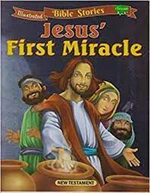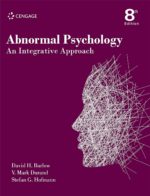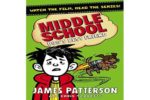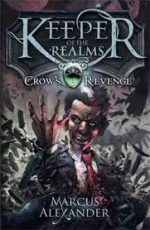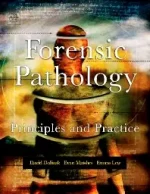-
Illustrated Bible Stories Jesus First Miracle
KSh 395.00Jesus First Miracle (Illustrated Bible Stories (New Testament) Book 24) – Kindle edition by Editorial Board, Manoj Publications Presents Illustrated Bible Stories New Testament Different Books These story aim to teach children about belief in God and the power of trust and love The book for the children is written in simple language and contain colourful illustrations.
-
Abnormal Psychology: An Integrative Approach-Cengage Learning EMEA
Balancing biological, psychological, social, and cultural approaches, this book’s ground-breaking integrative approach is the most modern, scientifically valid method for studying abnormal psychology. Updated with leading-edge research findings, the eighth edition draws on the expertise of David H. Barlow, V. Mark Durand, and Stefan G. Hofmann, three internationally recognized experts in clinical psychology. In ABNORMAL PSYCHOLOGY: AN INTEGRATIVE APPROACH, the authors successfully blend sophisticated research with an accessible, engaging writing style. They go beyond simply describing different schools of thought on psychological disorders, exploring the interactions of the various forces that contribute to psychopathology.
-
Middle School Dog’s Best Friend
KSh 995.00Discover the series that inspired the Middle School movie with this hilarious installment of James Patterson’s hit series starring everyone’s favorite underdog, with non-stop laughs on every page.It’s a dog-eat-dog world, and Rafe Khatchadorian is just trying to live in it. It’s a dog-eat-dog world, and Rafe Khatchadorian is just trying to live in it. Life in middle school is finally starting to seem bearable, until Rafe spots his grandmother standing in the free-meal line at the local soup kitchen.
To help earn some money for the family, Rafe concocts a brilliant plan, a dog-walking business that soon turns into a huge money-making neighbourhood empire. He’ll even have extra cash to buy his own WormHole Deluxe Multi-Platform GameBox!
That is, until two terrible twins launch the Great Dog War by sabotaging Rafe’s flyers and stealing his customers. Plus, his bratty kid sister Georgia has skipped a grade so now she’s in all of Rafe’s classes. Throw a kid a bone!
-
My Fairytale Time Goldilocks and the Three Bears
KSh 595.00My Fairytale Time Goldilocks and the Three Bears is a wonderful retelling of a classic fairytale for 3-6 year olds with charming illustrations. Every page showcases delightful full-page artwork, illustrated by Francesca Assirelli, packed with charm and detail that will enthrall young children. Thicker paper is perfect for little hands and the glittery cover makes the book eye-catching and appealing, encouraging toddlers to want to read. This wonderful picture book will capture the imaginations of younger children and is perfect for bedtime reading.
-
COLOURING BOOK OF FAIRIES
KSh 295.00Sawan Presents Colouring Book of Fairies, helps kids develop skills and even improves concentration. This Coloring books contains colouring pages to keep your young one occupied in a fun filled activity and learning.
-
Take Charge of Your Diabetes: A diabetes book that describes a completely new approach to treat diabetes. Paperback
KSh 1,295.00Though not all physicians are aware of the scientific advances that prove it, most diabetics can now avoid insulin injections and prevent or reverse the deadly complications of their disease. The key is treating the root problem-insulin resistance-instead of focusing on controlling blood sugar levels, an outdated practice that puts patients at greater risk for heart attack and stroke. Take Charge of Your Diabetes showcases the unique plan Dr. Zaidi has developed in treating thousands of cases of Type 1 and Type 2 successfully. Dramatically different from traditional treatment protocols, the program includes an easy-to-follow diet, a moderate exercise and stress-reduction plan, vitamin and supplement recommendations, and a prescription medication regimen that reduces the number of medications as time goes on instead of the traditional treatment model: stepping up doses as diabetes progresses.
-
Keeper of the Realms Crow’s Revenge Book
KSh 1,295.00Book one in this new fantasy adventure series, Keeper of the Realms. ‘I’ve just had a flesh-eating giant tearing around my house and now I’m in this strange land I don’t know anything about!’ CHARLIE KEEPER has been forced from her home by a bloodthirsty and terrifying stranger. But in escaping she discovers her house holds the gateway to the REALM OF BELLANIA – a place of myth, magic . . . and an evil Lord with a very bad attitude. NOW its fate rests squarely upon Charlie’s shoulders. But before she can untangle the mystery that will save Bellania, she needs the answer to a life-changing secret her guardian, the dastardly Mr Crow, has been keeping from her . . . Just who is Charlie Keeper?
-
World Famous Fairy Tale-Tom Thumb
KSh 395.00Sawan presents Tom thumb. Storytelling is a traditional art followed by our forefathers. It is something that can be enjoyed during childhood up to early teens. Moral Stories is a collection of age Old time-tested stories which will help readers learn and develop basic moral values such as sincerity, honesty, courage and truthfulness. Moral Stories teaches children good habits and behavior.
-
Frames of Reference for Pediatric Occupational Therapy
KSh 19,300.00Frames of Reference for Pediatric Occupational Therapy, Fourth Edition , uses frames of reference (neuro-development, social participation, etc.) as effective blueprints for applying theory to pediatric OT practice. Updated with new chapters, case examples, and a new focus on evidence-based practice. This proven approach helps students understand the “why” of each frame of reference before moving on to the “how” of creating effective treatment programs to help pediatric clients lead richer, fuller lives.
The book first covers the foundations of frames reference for pediatric OT (Section I), and then covers commonly used frames of reference such as motor skill acquisition, biomechanical, and sensory integration (Section II). A final section discusses newer focused/specific frames of reference like handwriting skills and social participation. A standardized format within each frame of reference chapter covers the same elements (Theoretical Base, Supporting Evidence, the Function/Dysfunction Continuum, Guide to Evaluation, and Application to Practice) to help students build the knowledge and skills needed for effective practice.
Case Examples illustrate frames of references in action.
NEW! Additional frames of reference —STAR approach to Sensory Processing Disorders, Anxiety and Depression in school age children, and a Strength Based Approach for Adolescents with Autism—are covered in three new chapters to better prepare students for everyday practice.
NEW! Supporting Evidence sections in frames of reference chapters cover the evidence supporting each theory.
EXPANDED! Evaluation sections cover new assessment instruments available to the OT practitioner and now include new real-world examples.
NEW! Color images of actual clinicians working with actual patients , along with a wide range of updated photos and charts, illustrate key concepts and applications.
Essential terms are defined within the theoretical base in each frame of reference
Practical sections on the “Function/Dysfunction Continuum” indicate the severity of the dysfunction and outline the level of needed intervention.
eBook available for purchase. Fast, smart, and convenient, today’s eBooks can transform learning. These interactive, fully searchable tools offer 24/7 access on multiple devices, the ability to highlight and share notes, and more
-
Forensic Pathology Principles and Practice
KSh 60,000.00Forensic Pathology is a comprehensive reference that uses a case-oriented format to address, explain and guide the reader through the varied topics encountered by forensic pathologists. Developed in response to a severe void in the literature, the book addresses topics ranging from medicolegal investigation of death to death scene investigation, forensic autopsy, and artifacts of resuscitation as well as complications of medical therapy, forensic osteology, forensic odontology, forensic photography, and death certification. The book includes various types of cases, including sudden natural death, asphyxia, motor vehicle collisions, death in custody, child abuse and elder abuse, acute psychiatric and emotional deaths, and pregnancy. It contains sample descriptions of pathological lesions which serve to aid pathologists in reporting their findings to law enforcement agencies, attorneys, and others involved in investigations of sudden death. The concepts outlined in the text are beautifully illustrated by large, colorful photographs. There are also “Do and Don’t” sections at the end of each chapter that provide guidance for handling the types of cases examined. This work will benefit not only experienced forensic pathologists, but also hospital pathologists who occasionally performs medicolegal autopsies; doctors in training; medical examiners; law enforcement personnel; crime scene investigators; attorneys; and fellows and students of the medical sciences.

